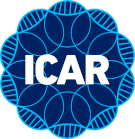Section 09 – Dairy Cattle Genetic Evaluation
Background
The present Guidelines aim to provide a general view of the current practices in place regarding genetic and genomic evaluations of dairy cattle both at national and international level. The overview is based on the genetic/genomic evaluation systems (GES) as currently provided by the National Genetic Evaluation Centres (NGEC) participating in Interbull evaluations.
International bull evaluations for dairy cattle offered by Interbull are of three main types (https://interbull.org/ib/cop_chap5):
- Conventional evaluation based on the exchange of national EBVs using the MACE (Multiple-trait Across Country Evaluation) methodology for Holstein, Brown Swiss, Simmental, Jersey, Guernsey and Red Dairy Cattle populations;
- Genomic evaluation based on the exchange of genotypes between Interbull and several countries for Brown Swiss and (small) Holstein cattle populations using the InterGenomics methodology;
- Genomic evaluation based on the exchange of GEBVs for young genotyped Holstein bulls only, (and only until they have enough daughters to qualify for official MACE proofs) using the GMACE (Genomic MACE) methodology.
The requirements provided in these guidelines are solely intended for participation in the international genetic/genomic evaluation services offered by Interbull. They deal mostly with production traits but the same principles can in most cases be equally well applied to other traits.
In this document Genetic Evaluation System (GES) is meant to include all aspects from population structure and data collection to publication of results. Each and every statistical treatment of the data that has a genetic breeding motivation or justification is an integrated part of GES.
The purpose of this set of guidelines is to facilitate a higher degree of harmonisation in the things that can be harmonised and to encourage documentation of the things that cannot be harmonised at this time. These guidelines should increase the quality and accuracy of evaluations at the national and international level. The aim is also to increase clarity in showing the biological and statistical reasons for what is done in national GES.
Recommendations presented here should also be viewed holistically as a coherent system. Every specific recommendation presupposes acceptance and adherence to many other such specific recommendations. Therefore, and as an example, when “unique identification of all animals” is recommended in one section, then all further reference to “animals” is to be interpreted as “uniquely identified animals”.
National genetic evaluation centres (NGECs) should keep official, up to date and detailed documentation on all aspects of their GES. Documentation on all aspects of GES should also be made available on the Interbull Centre website (www.interbull.org) and updated regularly with any changes as soon as they have taken place.
